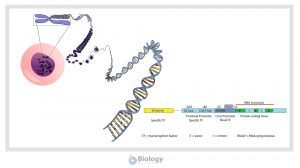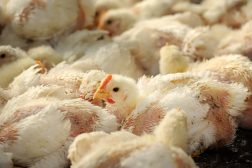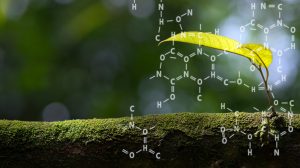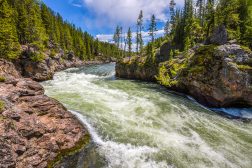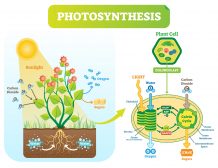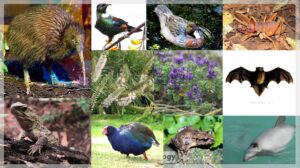Table of Contents
Definition
noun
plural: cisternae
cis·ter·na, sɪˈstɜːnə
(cell biology) The flattened membrane disk containing fluid, such as those occurring in the Golgi apparatus and the endoplasmic reticulum
Details
Overview
In general, a cisterna is a reservoir or tank for storing water, especially a tank for holding rainwater for later use. In biological context, a cisterna refers to the disk containing fluid and makes up the Golgi apparatus and the endoplasmic reticulum. In anatomy, cisterna may also refer to the space that is filled with bodily fluid. However, it is more commonly referred to as cistern (also, reservoir).
In cell biology
A cisterna refers to any of the flattened disks of the endoplasmic reticulum and the Golgi apparatus. The endoplasmic reticulum (ER) is the organelle that occurs as interconnected network of flattened sacs or tubules called cisternae in the cytoplasm. Similarly, the Golgi apparatus is made up of membrane-bound stacks called cisternae. However, the membranes of the ER are connected to the outer nuclear envelope and may also extend into the cell membrane. There are two types of ER, i.e. the rough endoplasmic reticulum or rER, and the smooth endoplasmic reticulum or sER. Their difference lies on the presence or absence of ribosomes. The rER bears many ribosomes on its outer surface giving it a rough appearance; hence, its name. In contrast, the sER does not have ribosomes attached to its outer surface thus making it relatively smoother. The rER is abundant in hepatocytes whereas the sER is abundant in mammalian liver and gonad cells. Since rER has ribosomes attached to its surface it is therefore involved in protein synthesis and protein folding, as well as the shuttling of proteins to the Golgi apparatus where the nascent protein undergoes maturation. It synthesizes and secretes serum proteins (such as albumin) in the liver, and hormones (such as insulin) and other substances (such as milk) in the glands. The rER is also involved in the manufacture of lysosomal enzymes (in which a marker, mannose-6-phosphate, is later added in the Golgi apparatus). It is also where certain integral membrane proteins are formed. N-linked glycosylation also occurs here (O-glycosylation occurs in the Golgi). The sER, on the other hand, does not have ribosomes on its surface. Its functions include synthesis of lipids, metabolism of carbohydrates (i.e. the conversion of glucose-6-phosphate to glucose during glucogenesis via the sER enzyme glucose-6-phosphatase) and calcium concentration, drug detoxification, and attachment of receptors on cell membrane proteins. It is also involved in intracellular transport, such as the transport of the products of the rER to other cell parts like Golgi apparatus. A specialized type of ER cisternae is the ternimal cisterna. Terminal cisternae are enlarged areas of the sarcoplasmic reticulum. The sarcoplasmic reticulum is a special type of sER and is found in the myocytes (muscle cells). This sarcoplasmic reticulum is involved in the absorption, storage, and release of calcium ions. The terminal cisternae are regions of intense calcium ion activities (i.e. uptake and release).
The Golgi apparatus is an organelle that is identified in 1898 by the Italian physician Camilo Golgi. A Golgi stack may consist of about three to twenty cisternae. Typically though, there are about six cisternae that make up a Golgi. The cisternae of Golgi may be grouped into four: cis, trans, medial, and trans-Golgi network. Accordingly, these four types contain different enzymes and therefore are involved in differing enzymatic activities.1 The major functions of the Golgi are glycosylation (i.e. adding carbohydrate to a protein), packaging of molecules like proteins into vesicles for secretion, transport of lipids around the cell, and the creation of lysosomes. With regard to function as the packaging center of the cell, the organelle sorts the proteins secreted by the endoplasmic reticulum into packages to be sent to the appropriate destinations. The Golgi apparatus may modify the protein by adding sugar to produce glycoprotein through glycosylation. The glycoprotein that is bound to be transported outside the cell will be excreted as vesicles. If the glycoprotein is for later use, it may be stored in vesicles within the cell (e.g. as lysosomes).
In anatomy
In neuroanatomy, cisternae refer to any of the openings in the subarachnoid space of the brain filled with cerebrospinal fluid. Some of the major subarachnoid cisternae are:
- cisterna cerebromedullaris or cerebellomedullary cistern
- cisterna pontis or pontine cistern
- cisterna interpeduncularis or interpeduncular cistern
- cisterna ambiens or ambient cistern
Supplementary
Etymology
- Latin cisterna, from cista (“‘box’”), from Ancient Greek kistē, “‘box’”.
Synonym(s)
Further reading
See also
Reference
- Day, K. J., Staehelin, L. A., & Glick, B. S. (2013-07-24). “A three-stage model of Golgi structure and function”. Histochemistry and Cell Biology. 140 (3): 239–249.
© Biology Online. Content provided and moderated by Biology Online Editors

